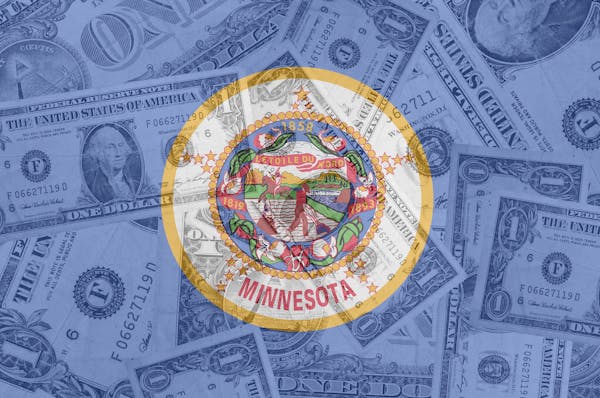Increasing immigration could help ease Minnesota's labor shortage.
At least that's what a new study from the state's Department of Employment and Economic Development (DEED) asserts.
Reversing plunging immigration rates could help solve some of Minnesota's stark staffing needs that have plagued employers for years, state officials revealed Monday.
While immigration has steadily fallen since 2015's peak of 16,783 to just 4,042 in 2021, state economists said that if immigration rebounded to 2015 levels, Minnesota could attract around 91,000 new immigrant workers to Minnesota between now and 2030.
A rise could stem from an increase in COVID-19 vaccination rates, the end of pandemic travel bans and new evacuee and refugee resettlement programs in Minnesota involving state agencies and prospective employers.
As of January, Minnesota employers had 212,000 job openings, more than twice the number of unemployed workers. As of March, Minnesota's unemployment rate was just 2.8% and its labor force participation rate was just 68%, down from 70.3% in 2015.
Immigrant laborers could help right that tide.
"Looking at population trends, it is remarkable that reversing our state's international immigration declines would get us over 25% of the way back to pre-pandemic labor force trends," said Anthony Schaffhauser, DEED labor market information analyst.
Minnesota's labor force grew by 191,000 between 2010 and 2020, with foreign-born workers making up more than 50% of the increase. Most of the growth occurred in health care, construction, landscaping, factory and agriculture jobs. But the trend turned downward after 2015 — likely in part from the Trump administration's stricter immigration policies — and drastically dropped during the pandemic, Schaffhauser said.
Schaffhauser noted the 2022 labor market experienced "record tightness." Even though the state should still add more than 75,000 workers in the next 10 years, that's a much slower increase than the previous decade.
Welcoming more immigrants and refugees as well as bringing those already in Minnesota into the labor force will help ease the state's severe labor shortage, said Abdiwahab Mohamed, DEED assistant commissioner for immigrant and refugee affairs. He noted "from 2010 to 2020, foreign-born workers made up more than 50% of the state's labor-force growth."
Mohamed said immigrant worker numbers are expected to grow in the future, partly as employers hire more newly resettled refugees from Afghanistan, Ukraine, Venezuela and elsewhere.
More immigrant workers could help employers such as Bayport-based Andersen Corp., Eagan-based Marvin Windows and Arden Hills-based Delkor Systems, which have all grappled with worker shortages for years.
Labor shortages have hit some retailers, restaurants and clinics so hard that they have shortened hours, closed on certain days of the week, extended wait times, canceled customer services or used robots to replace some human work.
"Minnesota manufacturers aren't able to expand in some cases because they can't find employees, and Minnesota nursing homes aren't able to care for patients ready to be released from hospitals because they don't have enough caregivers," Interim DEED Commissioner Kevin McKinnon said in a statement. "Those are just two examples of the impact we've seen of workforce shortages across industries throughout the state."
DEED's study found foreign-born residents participate in the state's labor force at a rate 3.8% higher than U.S.-born residents.
This year, Gov. Tim Walz and legislators proposed opening an Office of New Americans that would focus on supporting immigrant and refugee integration, reducing barriers to employment and improving connections between employers and job seekers.
To address the gaping staffing shortages in Minnesota's long-term care facilities, Walz's administration also proposed new grants that would help nursing homes and health care sites recruit and retain immigrants and refugees for vital care positions.
Officials at DEED, the Federal Reserve Bank of Minneapolis and the Minnesota Chamber of Commerce joined ranks recently to find other ways to help immigrants secure jobs, including potentially changing licensing requirements for non-public-safety-related jobs. That would allow some immigrant workers to use documentation — like diplomas and certifications — from their prior countries to gain employment. Others might benefit from eliminating English-proficiency requirements.
"Breaking down the credential barrier for immigrants could help Minnesota address the tight labor market," Federal Reserve labor economist Ryan Nunn told Chamber of Commerce members recently. "When a state licenses any occupation, the foreign-born share of employment is substantially lower than in states that don't license the same occupation."
Veena Iyer, executive director of the Immigrant Law Center of Minnesota, recently told 130 employers attending last month's Chamber Workforce Summit how some Minnesota employers are adopting policies that recruit and support immigrant workers.
Some Minnesota firms have paid Dreamer employees' DACA-renewal fees, partnered with immigrant legal service providers, offered English classes at work and paid for transportation to and from work, she said.
